Harness the power of stainless steel braided hydraulic hoses for your high-pressure systems. Understand their unparalleled benefits, specifications, applications, and maintenance tips.
Stainless Steel Braided Hydraulic Hose
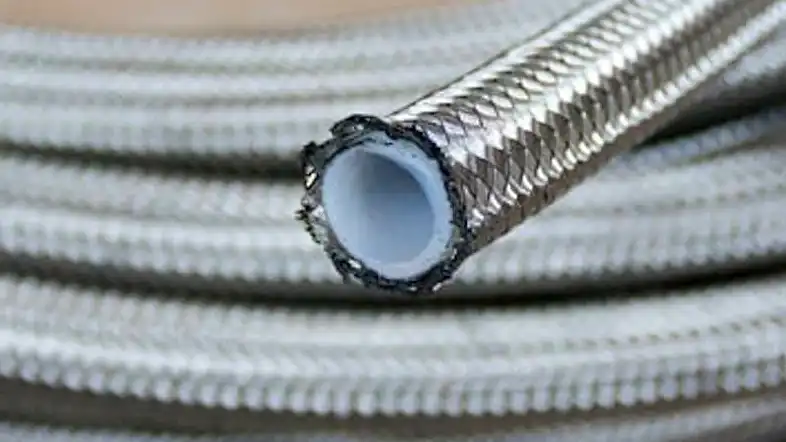
Let’s start with the basics.
What exactly is a stainless steel braided hydraulic hose?
A stainless steel braided hydraulic hose is a specialized hose that’s constructed from an inner synthetic rubber tube, reinforced by a stainless steel wire braiding, and covered by a thin layer of stainless steel. It’s designed to withstand high pressures and is used in a variety of heavy-duty applications across multiple industries.
When you peek inside, you’ll find a core tube. This tube carries the fluid, keeping it contained and directing it where it needs to go.
A structural layer surrounds this tube—this is where the stainless steel braiding comes in. The braiding is what gives the hose its flexibility and strength, while also protecting the inner tube. Then, the whole assembly is encased in an outer cover that protects against abrasion, the elements, and other forms of environmental damage.
Stainless steel braided hydraulic hoses are popular for their exceptional performance under high pressure, resistance to temperature variations, and excellent durability. Their versatility makes them a preferred choice for applications in industries like oil and gas, agriculture, mining, and manufacturing, among others.
Material Composition of Stainless Steel Hoses
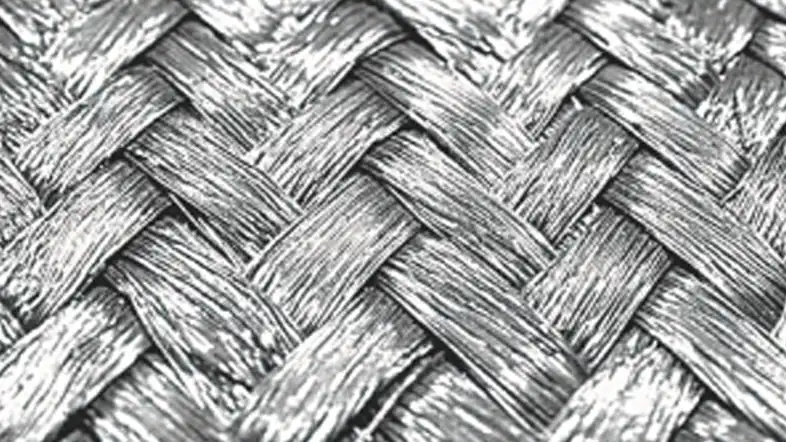
What is stainless steel, and why is it used in hoses?
Stainless steel is an iron alloy with at least 10.5% chromium. The chromium forms an invisible layer on the surface of the steel, protecting it from oxidation and making it ‘stainless’. Other elements, such as nickel, molybdenum, and nitrogen, are also added to enhance the properties of the stainless steel.
Stainless steel is the material of choice for braided hydraulic hoses due to its superior strength, corrosion resistance, and high-temperature tolerance. These features make stainless steel hoses ideal for high-pressure, high-temperature applications, where they are required to perform reliably under challenging conditions.
Carbon Steel vs. Stainless Steel for Hydraulic Hose Reinforcement
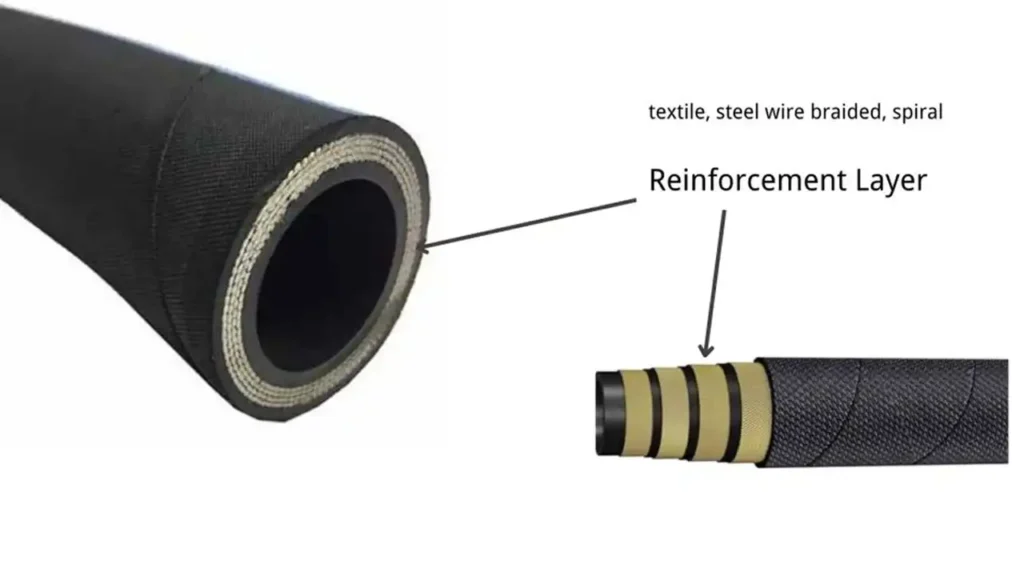
The choice between carbon steel and stainless steel for hydraulic hose reinforcement largely depends on the specific application and environmental conditions.
Carbon Steel
- Pros:
- Cost-effective: Generally more affordable than stainless steel.
- High strength: Offers excellent strength for many hydraulic applications.
- Cons:
- Susceptible to corrosion: Can rust in environments with moisture or exposure to corrosive substances.
- Requires maintenance: Protective coatings or treatments to prevent corrosion.
Stainless Steel
- Pros:
- Excellent corrosion resistance: Highly resistant to rust and other forms of corrosion.
- Long lifespan: Can last significantly longer than carbon steel in harsh environments.
- Low maintenance: Requires minimal upkeep due to its corrosion resistance.
- Cons:
- Higher cost: Typically more expensive than carbon steel.
- May be less ductile: Can be less flexible than carbon steel in some cases.
Factors to Consider
When choosing between carbon steel and stainless steel, consider the following factors:
- Environment: Will the hose be exposed to moisture, corrosive substances, or extreme temperatures?
- Pressure: What is the maximum working pressure of the hydraulic system?
- Temperature: What is the expected temperature range of the fluid?
- Cost: What is the budget for the hose and its reinforcement?
- Maintenance: How much time and effort are you willing to spend on maintenance?
In general, stainless steel is preferred for applications where corrosion resistance and long lifespan are critical. However, carbon steel can be a suitable option in less demanding environments or when cost is a major concern.
It’s recommended to consult with a hydraulic hose specialist to determine the best material for your specific application. They can provide expert advice based on your requirements and environmental conditions.
Significance of Stainless Steel Braiding
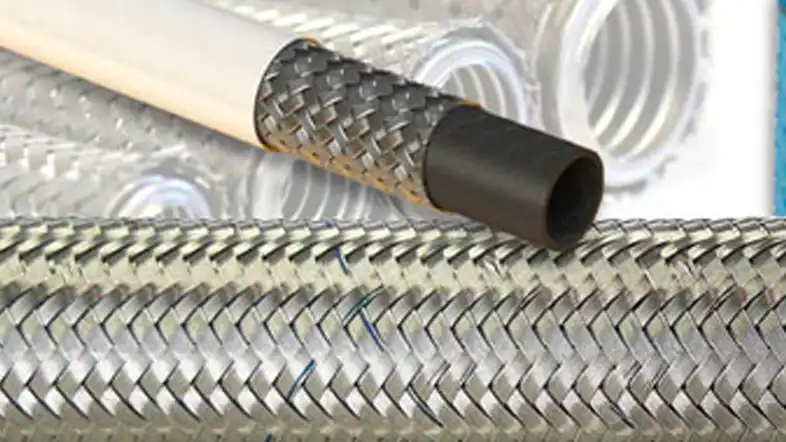
Why is the stainless steel braided design so crucial?
The stainless steel braid serves several critical functions in a hydraulic hose. First and foremost, it provides reinforcement. The braiding pattern contributes to the hose’s high pressure resistance by evenly distributing the pressure across the hose. Furthermore, the braiding offers protection against physical damages, such as abrasion and impact.
Aesthetically, the braided design gives the hoses a sleek, modern look. This aesthetic appeal, coupled with the functionality, has led to the adoption of stainless steel braided hydraulic hoses in various applications, from industrial machinery to high-end automotive and motorcycle designs.
Types of Stainless Steel Braided Hydraulic Hoses
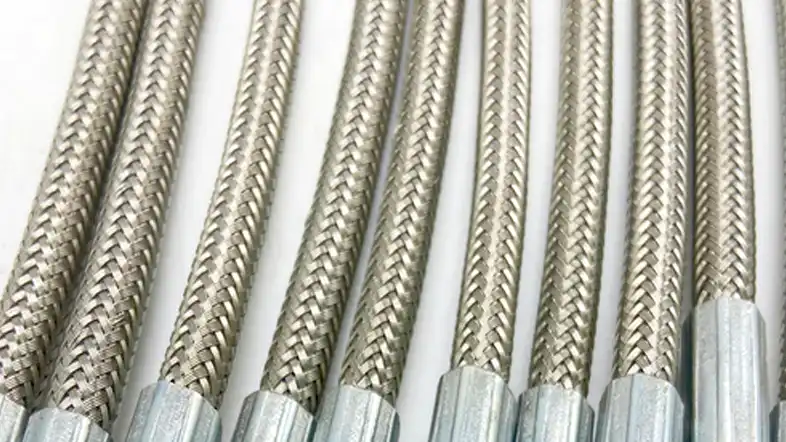
Are all stainless steel braided hydraulic hoses the same? The simple answer is no. These hoses come in a variety of types and specifications to cater to different needs and applications. The key differences among them lie in their design, size, pressure rating, and temperature range.
Two common types are single-braided and double-braided hoses. As the names suggest, single-braided hoses have one layer of stainless steel braid, while double-braided hoses have two. Double-braided hoses offer greater pressure resistance and are suited for heavy-duty, high-pressure applications.
More details about the types and specifications of stainless steel braided hydraulic hoses are discussed in the sections below.
Specification and Sizes of Stainless Steel Braided Hoses
How do I choose the right size and specification of a stainless steel braided hydraulic hose?
When choosing a stainless steel braided hydraulic hose, you need to consider three key specifications: size, pressure rating, and temperature range.
The size of a hose is typically represented by its inside diameter (ID) and outside diameter (OD). The ID determines the volume of fluid the hose can transport, while the OD is influenced by the number of braiding layers and affects the flexibility of the hose.
The pressure rating is the maximum amount of pressure the hose can withstand without failing. This is often represented in pounds per square inch (PSI) or bar.
The temperature range represents the maximum and minimum temperatures the hose can withstand without degrading.
As for sizes, stainless steel braided hydraulic hoses come in a wide range, from smaller hoses with an ID of a few millimeters, suitable for precision applications, to larger hoses with an ID of several inches, used in heavy industrial machinery.
Reading Hose Specifications
What do those numbers on the hose mean?
The numbers you see on the hose typically represent the size (ID and OD), pressure rating, and sometimes the temperature range. For example, a hose marked as “1/2″ x 3000 PSI” indicates that the hose has an ID of 1/2 inch and a maximum pressure rating of 3000 PSI.
Reading hose specifications correctly is crucial to ensuring the hose is fit for its intended application. Using a hose with incorrect specifications can lead to hose failure and potential system damage.
Applications of Stainless Steel Braided Hydraulic Hoses
Where are stainless steel braided hydraulic hoses used?
These hoses are employed in a variety of applications across multiple industries. Some of the most common uses include hydraulic systems in industrial machinery, automotive brake and fuel lines, oil and gas pipelines, water supply systems, and refrigeration equipment, among others.
Their high pressure and temperature resistance, coupled with their corrosion resistance and flexibility, make them an excellent choice for these and other demanding applications.
Industry-Specific Uses of Stainless Steel Hoses
How do different industries utilize stainless steel hoses?
Stainless steel braided hydraulic hoses are found in virtually every industry. For example:
- Automotive Industry: They are used for brake lines, fuel lines, and power steering lines, providing reliable performance under high pressure and temperature conditions.
- Oil and Gas Industry: These hoses are used for a variety of applications, including oil drilling, fuel transport, and gas transfer, where their high pressure and corrosion resistance are essential.
- Manufacturing Industry: They are used in hydraulic systems of various machinery, providing flexible, high-pressure connections between moving parts.
- Agricultural Industry: These hoses are used in various farming equipment like tractors and harvesters, offering durability and flexibility under tough conditions.
Why Choose Stainless Steel Braided Hydraulic Hoses?
What are the advantages of using stainless steel braided hydraulic hoses?
These hoses offer a myriad of benefits, including:
- High pressure and temperature resistance: They can withstand pressures up to several thousand PSI and temperatures up to several hundred degrees Celsius, making them ideal for high-pressure, high-temperature applications.
- Corrosion resistance: The stainless steel braid offers excellent resistance to a variety of corrosive substances, ensuring long-lasting performance.
- Flexibility: Despite their robust construction, these hoses are highly flexible, allowing for easy installation and operation.
- Durability: The stainless steel braid offers excellent protection against physical damage, contributing to the hose’s long service life.
- Aesthetics: With their sleek, modern look, these hoses add an aesthetic touch to any application.
Comparing Stainless Steel Hoses to Rubber and PVC Hoses
How do stainless steel braided hydraulic hoses compare to rubber and PVC hoses?
While rubber and PVC hoses have their advantages, such as lower cost and lighter weight, they fall short when it comes to pressure and temperature resistance, durability, and corrosion resistance.
Stainless steel hoses, on the other hand, excel in these areas. They can withstand much higher pressures and temperatures, offer excellent corrosion resistance, and have a much longer service life compared to rubber and PVC hoses.
However, stainless steel hoses are generally more expensive and heavier than their rubber and PVC counterparts. Therefore, the choice between these types of hoses often comes down to the specific requirements of the application.
Understanding the Lifespan of Stainless Steel Braided Hoses
How long do stainless steel braided hydraulic hoses last?
The lifespan of a stainless steel braided hydraulic hose depends on several factors, including the operating conditions (pressure, temperature, corrosive substances), the quality of the hose, and the maintenance practices.
Generally, a high-quality stainless steel hose used within its specifications and properly maintained can last for several years, if not decades. However, it’s crucial to regularly inspect the hose and replace it if any signs of damage or degradation are detected.
How Long Do Hydraulic Hoses Last: Exploring the Lifespan of Hydraulic Hoses
Stainless Steel Braided Hoses and Corrosion Resistance
Are stainless steel braided hydraulic hoses resistant to corrosion?
Yes, one of the main advantages of stainless steel braided hydraulic hoses is their excellent resistance to corrosion. The stainless steel braid forms a protective layer that shields the inner components of the hose from corrosive substances.
This corrosion resistance extends the lifespan of the hose, making it an excellent choice for applications involving corrosive fluids or environments, such as oil and gas pipelines, marine applications, and chemical processing plants.
High-Temperature Tolerance of Stainless Steel Hoses
Can stainless steel braided hydraulic hoses withstand high temperatures?
Absolutely. Stainless steel braided hydraulic hoses are designed to operate under high temperatures. Their temperature resistance is mainly attributed to the stainless steel braid, which can withstand temperatures up to several hundred degrees Celsius.
However, it’s important to note that the actual temperature limit of a hose depends on its specific design and material composition. Always refer to the hose’s specifications to ensure it’s suitable for the intended temperature range.
Pressure Capacity of Stainless Steel Braided Hoses
How much pressure can a stainless steel braided hydraulic hose handle?
The pressure capacity of a stainless steel braided hydraulic hose varies depending on its design and size. Generally, these hoses can handle pressures up to several thousand PSI.
The stainless steel braid plays a crucial role in the hose’s pressure capacity. The braid evenly distributes the pressure across the hose, preventing any localized stress that could lead to failure.
However, like the temperature limit, the actual pressure capacity of a hose depends on its specific design and material composition. Always refer to the hose’s specifications to ensure it’s suitable for the intended pressure range.
Installing Your Stainless Steel Braided Hydraulic Hose
Proper installation is crucial to ensuring the performance and longevity of a stainless steel braided hydraulic hose. Here are some steps to install your hose correctly:
- Measure the Hose: Measure the length of the hose you need, from fitting end to fitting end. Always allow for some slack to accommodate movement and prevent stress on the fittings.
- Select the Correct Fittings: Choose the correct fittings based on the size and type of the hose and the connection points. The fittings must be compatible with the hose to ensure a secure and leak-free connection.
- Attach the Fittings: Insert the hose into the fitting until it seats against the stop. Secure the fitting according to the manufacturer’s instructions, which may involve crimping or screwing.
- Install the Hose: Route the hose avoiding sharp bends, which can strain the hose and reduce its lifespan. Ensure the hose is not rubbing against any sharp edges or hot surfaces.
- Check for Leaks: After installation, pressurize the system and check for leaks. If any leaks are found, recheck the fittings and replace the hose if necessary.
Maintenance Tips for Stainless Steel Hoses
How do I take care of my stainless steel braided hydraulic hose?
Proper maintenance can significantly extend the lifespan of your hose. Here are some maintenance tips:
- Regular Inspection: Regularly inspect the hose for any signs of damage or degradation, such as cracks, bulges, corrosion, or leaks.
- Correct Use: Always use the hose within its specified pressure and temperature range. Overloading the hose can lead to premature failure.
- Proper Installation: Ensure the stainless steel braided hose is installed correctly, with enough slack to prevent stress on the fittings, and away from any sharp edges or hot surfaces. How to Install Hydraulic Hose? [Hydraulic Hose Installation Tips]
- Cleanliness: Keep the hose clean to prevent the buildup of corrosive substances. Use compatible cleaning agents as recommended by the manufacturer. How to Clean Hydraulic Hoses Effectively for Hydraulic Hose Maintanance
- Replacement: Replace the hose immediately if any damage or degradation is detected. A damaged hose can lead to system failure and potential safety hazards.
Essential Hydraulic Hose Maintenance: Tips and Best Practices for Longevity and Performance
FAQs
Why are stainless steel braided hydraulic hoses used in high-pressure applications?
Stainless steel braided hydraulic hoses are ideal for high-pressure applications due to their construction. The stainless steel braid provides a protective layer that evenly distributes the pressure across the hose, preventing any localized stress that could lead to failure. Moreover, the inner tube is designed to withstand the high pressure, ensuring the hose performs reliably under such conditions.
Can I use a stainless steel braided hydraulic hose for transferring corrosive substances?
Yes, stainless steel braided hydraulic hoses are excellent for transferring corrosive substances. The stainless steel braid offers excellent resistance to a variety of corrosive substances, protecting the inner components of the hose from corrosion. However, it’s always crucial to ensure the hose is specifically rated for the particular substances and conditions of your application.
What is the maximum temperature that a stainless steel braided hydraulic hose can handle?
The maximum temperature that a stainless steel braided hydraulic hose can handle depends on its specific design and material composition. Generally, these hoses can withstand temperatures up to several hundred degrees Celsius. Always refer to the hose’s specifications to ensure it’s suitable for your intended temperature range.
What should I do if I find any damage or degradation on my hose?
If you detect any damage or degradation on your hose, such as cracks, bulges, corrosion, or leaks, you should replace the hose immediately. Using a damaged hose can lead to hose failure, system damage, and potential safety hazards. Always inspect your hoses regularly and maintain them properly to ensure their longevity and safe operation.
How should I clean my stainless steel braided hydraulic hose?
To clean your hose, use a soft cloth and a mild detergent or a compatible cleaning agent as recommended by the manufacturer. Avoid using abrasive cleaners or brushes, as they can damage the hose. Rinse the hose thoroughly and let it dry completely before reusing it.
Can I use any type of fitting with my stainless steel braided hydraulic hose?
No, not all types of fittings are compatible with every hose. When choosing fittings for your hose, consider factors such as the hose size, the type of connections, and the pressure and temperature ratings. The fittings must be compatible with the hose to ensure a secure and leak-free connection. Always follow the manufacturer’s instructions when attaching the fittings.
Conclusion
Stainless steel braided hydraulic hoses offer exceptional performance in high-pressure, high-temperature, and corrosive environments, making them a popular choice across a range of industries. From automotive and oil and gas to manufacturing and agriculture, these hoses have proven their worth time and again.
Their high pressure and temperature resistance, coupled with excellent corrosion resistance and flexibility, ensure reliable and long-lasting performance. However, their lifespan can be significantly extended with correct installation and maintenance practices.
When selecting a stainless steel braided hydraulic hose, consider factors such as the hose’s specifications, the operating conditions, and the type of fittings. Remember, a correctly chosen, installed, and maintained hose not only ensures optimal system performance but also contributes to operational safety.

